Medusa Galls on Sagebrush
Looking at Medusa galls on sagebrush, induced by Rhopalomyia midges
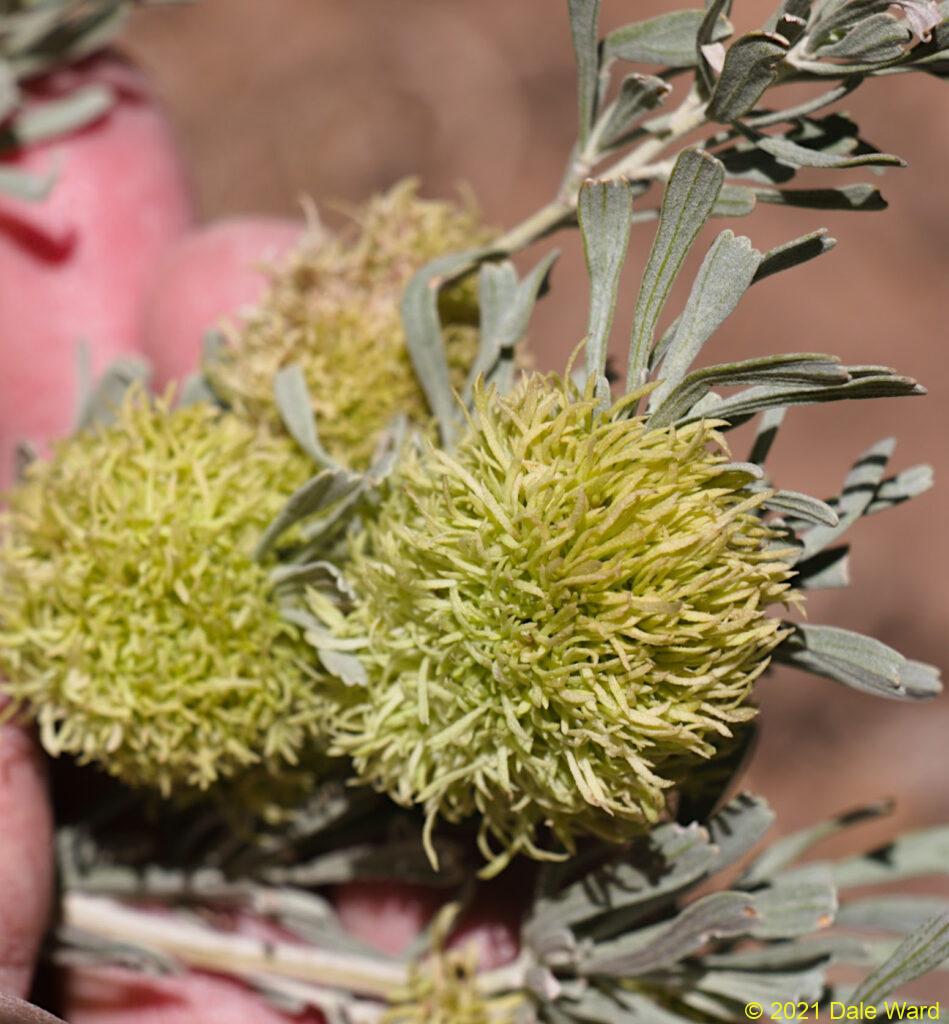 Close-up of some beautiful galls on a Sagebrush in Butler Wash, Utah. I’m thinking these are Medusa Galls, caused by the midge _Rhopalomyia medusa_. My fingers and hand are in the background, for scale.
Close-up of some beautiful galls on a Sagebrush in Butler Wash, Utah. I’m thinking these are Medusa Galls, caused by the midge _Rhopalomyia medusa_. My fingers and hand are in the background, for scale.
As I was hiking in Butler Wash, on the east side of Comb Ridge, Utah, I came across some striking, fluffy leaf-balls on a few of the Sagebrush (Artemesia tridentata?). The leaf-balls were soft, almost like one of those “office stress” toys.
I’ve seen something like these before - these were galls. Galls are plant tissue structures that the plant has made at the behest of some other organism. The “other organism” can be a fly, a wasp, a mite, bacteria…all sorts of things.
The host plant essentially grows food and shelter for some other creature that is living on the plant.
You can sometimes tell what organism caused the plant to form the gall by the type and appearance of the gall. In a way, the gall is a part of the gall-forming organism’s genetic expression as much, or maybe more, than that of the host plant’s. That’s in spite of the fact that the gall is made up of tissue from the host plant.
This is a very cool thing indeed.
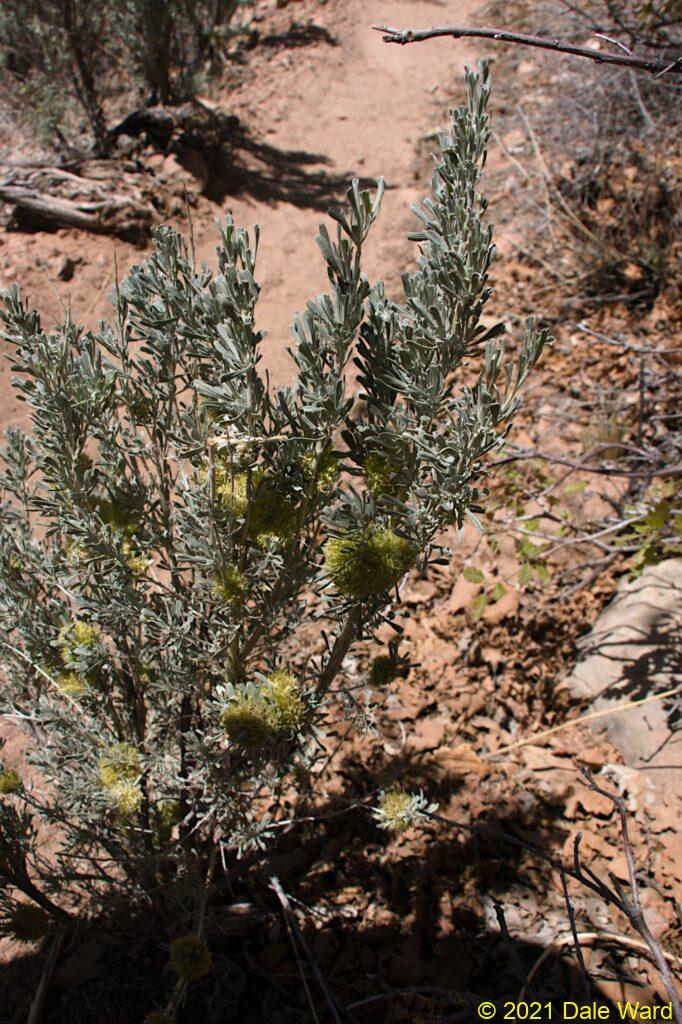 Medusa Galls on a Sagebrush in Butler Wash. I think these galls were caused by the midge _Rhopalomyia medusa_.
Medusa Galls on a Sagebrush in Butler Wash. I think these galls were caused by the midge _Rhopalomyia medusa_.
I believe that these particular galls are called “Medusa Galls”, and they are caused by a type of fly, a midge named Rhopalomyia medusa. This midge is a member of the Cecidomyiidae family_._
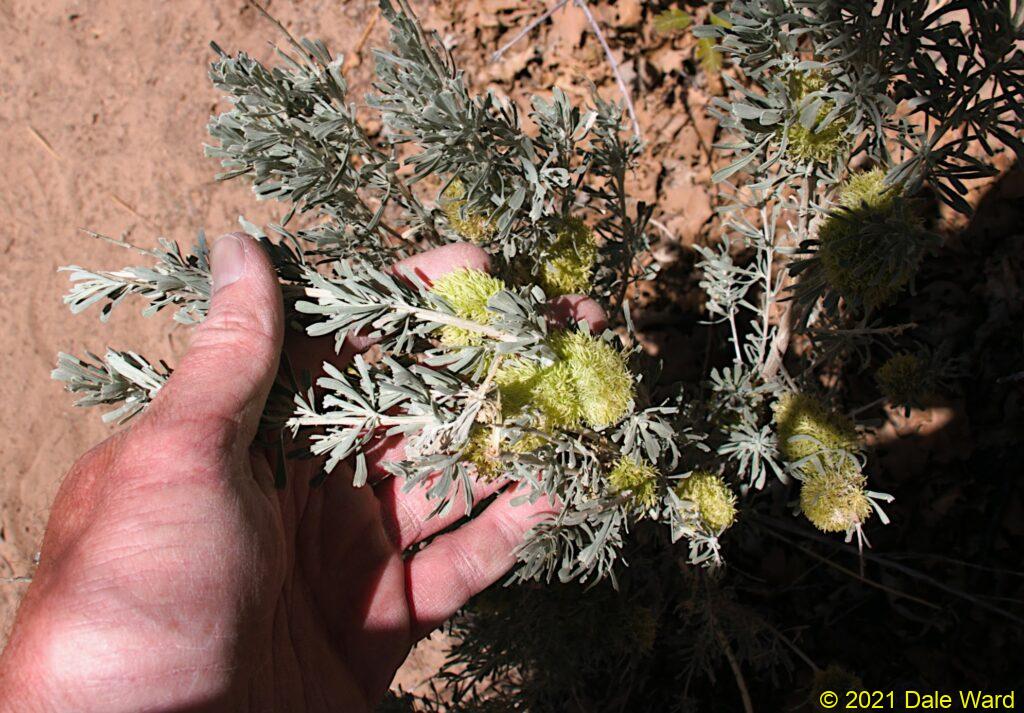 Medusa Galls on a Sagebrush in Butler Wash, with my hand for scale.
Medusa Galls on a Sagebrush in Butler Wash, with my hand for scale.
The galls develop in the Fall of the year, and overwinter. They become the lush, green galls that I found in the Springtime, when the adult midges emerge. Some of the other gall-forming insects, such as aphids, have multiple hosts and complicated life-histories. I don’t know whether or not that complex life cycle is true for these midges, or if they directly lay their eggs on another Sagebrush without going through another host.
Another thing I found to be interesting about these galls is that I’d seen a different type of gall on a Sagebrush this earlier year. The photos below were taken in Sand Canyon, Colorado. You can see that these galls are more like fluffs of cotton wool. These photos were taken in the January or February of this year, and the temperature was just above freezing.
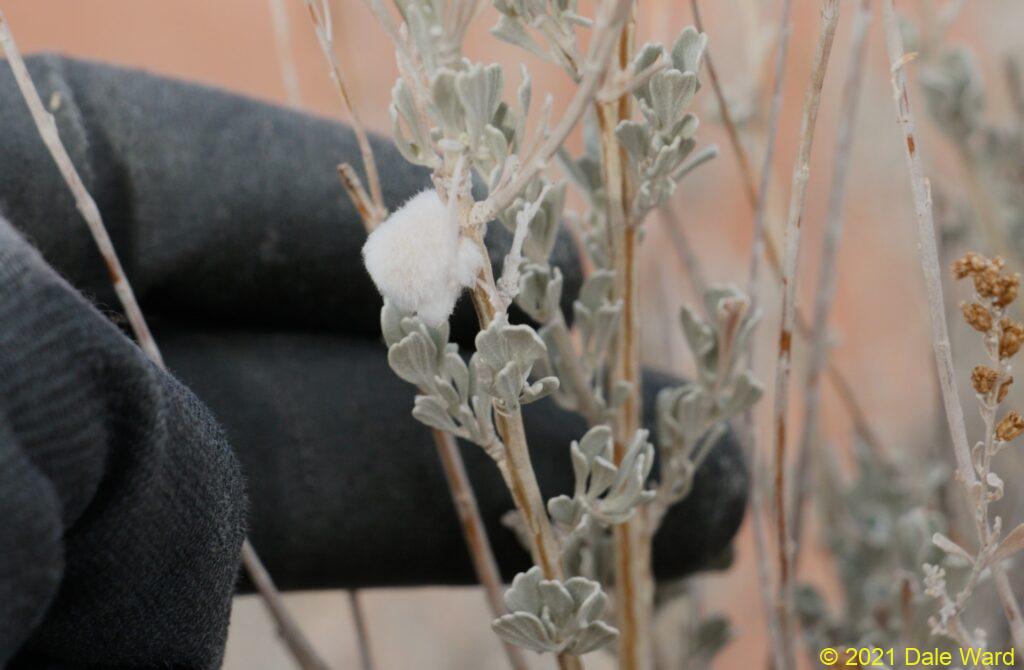 Gall on Artemesia, in Sand Canyon, Colorado January 12, 2021. Sagebrush Woolly Stem Gall Midge (_Rhopalomia floccosa_). My gloved fingers are in the background, for scale.
Gall on Artemesia, in Sand Canyon, Colorado January 12, 2021. Sagebrush Woolly Stem Gall Midge (_Rhopalomia floccosa_). My gloved fingers are in the background, for scale.
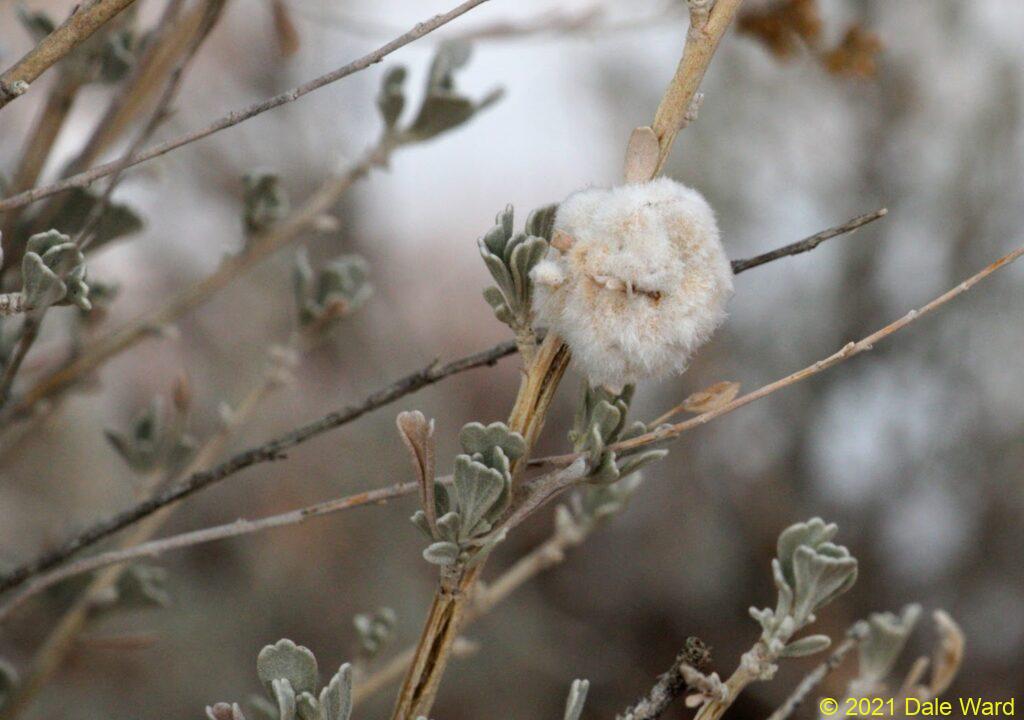 Gall on Artemesia, in Sand Canyon, Colorado January 12, 2021. Sagebrush Woolly Stem Gall Midge (_Rhopalomia floccosa_).
Gall on Artemesia, in Sand Canyon, Colorado January 12, 2021. Sagebrush Woolly Stem Gall Midge (_Rhopalomia floccosa_).
As far as I can tell, these galls were formed by the Sagebrush Woolly Stem Gall Midge - Rhopalomia floccosa.
Note that this midge is also in the genus Rhopalomia. I think it’s absolutely fascinating that there are at least two closely related gall-forming midges, both of whom have Artemesia sp as their host, who convince their host plant to build them such different-looking houses.
And the plants do it.
Sources:
The identifications in this post are very (very!) tentative. Identifying gall-forming insects can be pretty tough. I did the identifications by matching the galls’ appearances with photographs in the following (very helpful) websites
INaturalist.com Sagebrush Woolly Stem Gall Midge (Rhopalomyia floccosa).
The “Spaces, Places and Beings” Blog’s “Sagebrush Galls: Medusa!” page.
UBC Botanical Garden’s Artemisia tridentata and Rhopalomyia medusa page.